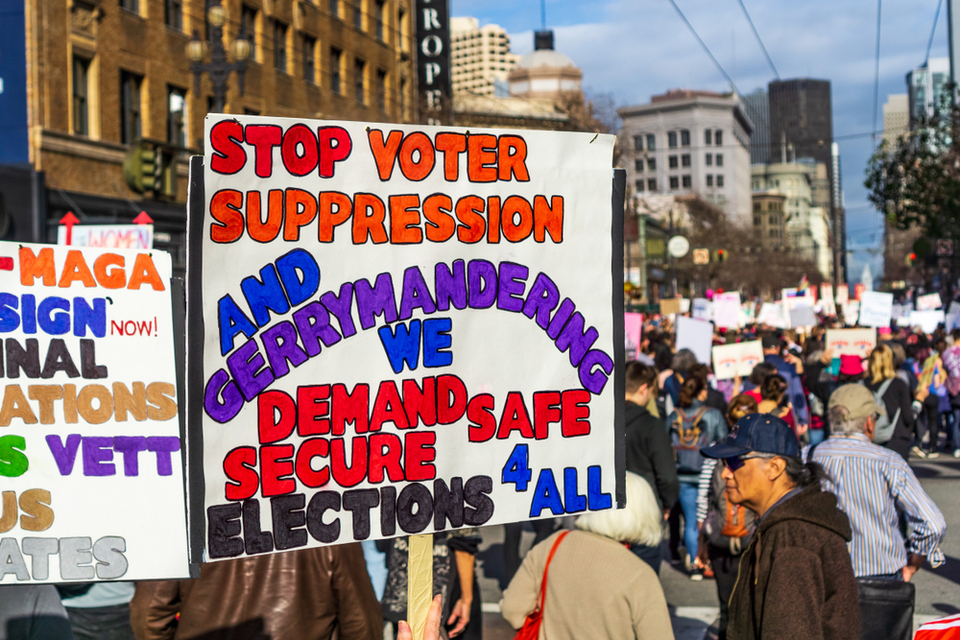As humans create technology, how can it ever really play a neutral role in politics? A new supercomputer algorithm built to beat gerrymandering shows the way, but present day examples show otherwise.
Gerrymandering is the deliberate manipulation of an electoral constituency to favor one party or politician, often excluding populations that would vote against the gerrymanderers.
Manipulating Maps
A new video from Vox details the problem of gerrymandering in American redistricting, and how a new supercomputer uses algorithms to objectively measure whether or not partisan gerrymandering has taken place.
States redraw legislative districts every ten years with the update of the U.S. Census.
Politicians are in control of redistricting, and as such, partisan gerrymandering is a concern for any voters and watchdogs who fear that redistricting remains in the hands of those who use it to their advantage to maintain power.
The video states that partisan gerrymandering is “bad for democracy,” but the problem has persisted for so long because it is difficult for courts to objectively determine partisanship with a consistent measurement when looking at the maps.
Let Science be The Judge
Wendy Tam Cho, a Senior Research Scientist at the National Center for Supercomputing Applications at the University of Illinois, hopes to change this. She and her team have built a supercomputer that can measure partisan district manipulation, and serve as a sort of nonpartisan “gerrymandering ruler” or calculator.
When drawing new districts, any shape is possible, and because of this, it is impossible to determine the intent behind the district maps.
Wendy Tam Cho developed an algorithm to detect partisan gerrymandering.Click To TweetThe supercomputer takes information that is important to the courts. The U.S. Supreme Court requires that districts all have the same population equity, meaning that they relatively contain the same number of people. The districts must also be contiguous, or not broken apart, and political subdivisions like cities and counties must stay intact.
Using an algorithm and only the Supreme Court criteria, the computer takes this nonpartisan information and creates a million or, even a billion, maps. By definition, these maps are non-partisan.
If a current map does not look like any of the nonpartisan maps created by the supercomputer, it indicates that gerrymandering as occurred. Thus, we have neutral evidence of partisanship that the courts could use to rule on cases.
The computer can then code partisan information into the algorithm to make another billion or so decidedly partisan maps. If the original map looks similar to any of these, the Supreme Court could, rightly, and objectively, infer partisan bias on the original map.
The algorithm hasn’t been used yet, but having a test like this will make it so that new cases can be tried.
Whitford V. Gill is a gerrymandering case that is up for deliberation in the Supreme Court.
In the 2012 election in Wisconsin, republicans won 48.6% of the votes, but still grabbed 61% of the state assembly seats.
New technology will make it so that courts are able to try cases like this objectively. As partisan gerrymandering continues to be a problem in U.S. politics, tech can be a useful way to objectively give a voice to those who have been affected by legal rule bending within the government.
Hackers ICE and Holograms
Tech is playing a bigger role in all kinds of political and governmental issues.
In Europe, holograms have become a part of some political campaign strategies.
We recently reported about President Donald Trump‘s interest in Palantir data aggregation as a means to implement his immigration agenda. Palantir, a big data aggregation company, has a new software called Investigative Case Management (ICM), that is being used by ICE to help accomplish the new administration’s immigration policies.
Then, of course, there is the instance of cyber warfare that occurred during the 2016 U.S. presidential election. Though it is still not clear to what extent the hacks had an effect in our election, they proved to sow an amount of public discord and suspicion that is unprecedented in recent years.
How do you feel about technology in politics? Does tech make politics more or less partisan?



















Comments (0)
Most Recent